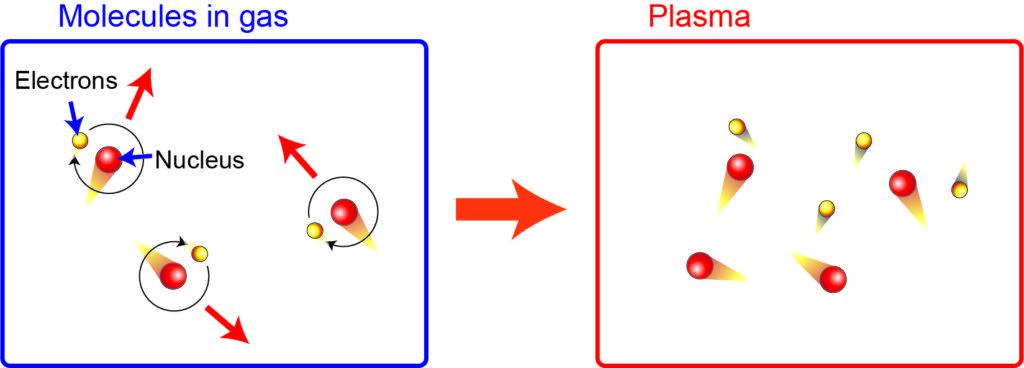
 What is plasma?
What is plasma?
Plasma is a state of matter that is similar to a gas but has some important differences. In a plasma, some or all of the atoms are ionized, meaning they have lost or gained one or more electrons, leaving behind positively charged ions and negatively charged free electrons. The presence of these free electrons makes plasma an electrically conductive medium, capable of responding to electromagnetic fields and generating its own fields.
Plasma can be found in a wide variety of natural and artificial settings, including lightning, flames, the Sun and other stars, and some types of laboratory experiments. It can also be used in a range of industrial applications, such as cutting and welding metals, producing semiconductors, and generating energy through fusion reactions.
Because plasma is an electrically conductive medium, it is influenced by electric and magnetic fields. This makes it a complex and dynamic medium, with many interesting and important properties, such as the ability to support waves and oscillations, to generate intense radiation and magnetic fields, and to interact with other materials in complex ways. Because of its importance in a range of natural and artificial settings, plasma is an active area of research in many fields of science, including astrophysics, fusion energy, materials science, and plasma physics.
How does ionospheric plasma affect HF radio propagation? See also an index of terms for HF Radio propagation.
shows near-real-time indices and explains what the terms mean.
